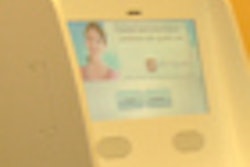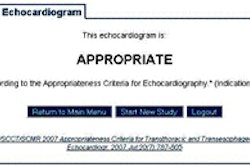While adoption of electronic health records (EHR) technology may be the mantra of hospital executives throughout the U.S., the reality is that only 2% meet the "meaningful use" criteria established by the U.S. Centers for Medicare and Medicaid Services (CMS), according to a new report published online in Health Affairs (August 26, 2010).
A progress report on EHR utilization in U.S. hospitals based on survey results from the American Hospital Association in Chicago reveals that hospital adoption of basic or comprehensive EHR systems increased only by 3.2% between 2008 and 2009.
However, from a radiology perspective, 85% of the hospitals reported they were using a RIS, and 83% had a PACS. An additional 6% had allocated funds to purchase a RIS and/or PACS, and 8% were in the process of installing these systems.
The American Hospital Association's survey was sent to the chief executive officers of 4,493 acute care, nonfederal hospitals and requested information about their health IT activities as of March 1, 2009. Sixty-nine percent responded, and these responses were statistically adjusted to balance for the 31% who did not complete the survey.
Each hospital reported on the presence or absence of 32 clinical functions of an electronic health record. The authors of the report, headed by Ashish Jha, MD, an associate professor of health policy and management of the Harvard University School of Public Health in Boston, defined a basic EHR system as a set of 10 clinical functions deployed in at least one hospital unit. A comprehensive EHR system included 24 functions.
Based on this criteria, 11.9% of U.S. hospitals were utilizing either a basic or comprehensive EHR system. This represents a total gain of 3.2% since 2008 and a gain of 1.2% for comprehensive EHR implementation.
As unimpressive as this growth rate is, the authors reported a finding of even greater concern from their analysis. Between 2008 and 2009, critical access, small, public, nonteaching, or rural hospitals, which are used by nearly 60% of Americans, fell even further behind in EHR adoption and the key underlying functions.
The 2008 survey showed that these hospitals had 2% to 10% lower levels of EHR adoption, and that 2009 data suggested that these gaps have widened, the authors reported. Critical access hospitals had 80% lower odds of having adopted at least a basic EHR system in 2009 than did large hospitals. The odds for small and medium-sized hospitals were 70% and 50% lower, respectively.
Approximately 33% of the hospitals had implemented prescription drug computerized physician order entry systems and electronic physician notes. But 40% reported that they had no firm plans to adopt these functions.
The researchers also analyzed how many respondents met the nine core meaningful use criteria required to receive federal stimulus funding. Although only 2% of hospitals currently meet stage I of the criteria, more than half of hospitals, 53%, expect to meet five or more of the criteria by 2012, and 21% need to add only one or two functions to qualify.
However, the authors expressed concern that predominantly larger, academic hospitals may be the recipients of the CMS financial incentives, and encouraged federal policymakers to take immediate concrete actions to address "this emerging digital divide."
"The problem is that the bonuses that hospitals get for meeting meaningful use criteria are front-loaded, meaning that hospitals have to implement and use EHRs by 2012 in order to get the bulk of the incentives," Jha said. "This is an aggressive timeline, and many hospitals may not make it. If they miss out, it may be years before they will be able to afford to purchase and install their own EHR systems."
By Cynthia E. Keen
AuntMinnie.com staff writer
August 30, 2010
Related Reading
CMS issues final 'meaningful use' EHR roles, July 13, 2010
Report: U.S. hospitals lag in CPOE adoption, June 22, 2010
Survey fails to find outcomes benefit for electronic records, April 12, 2010
Hospitals need to scramble on stimulus fund goals, March 3, 2010
Copyright © 2010 AuntMinnie.com



















